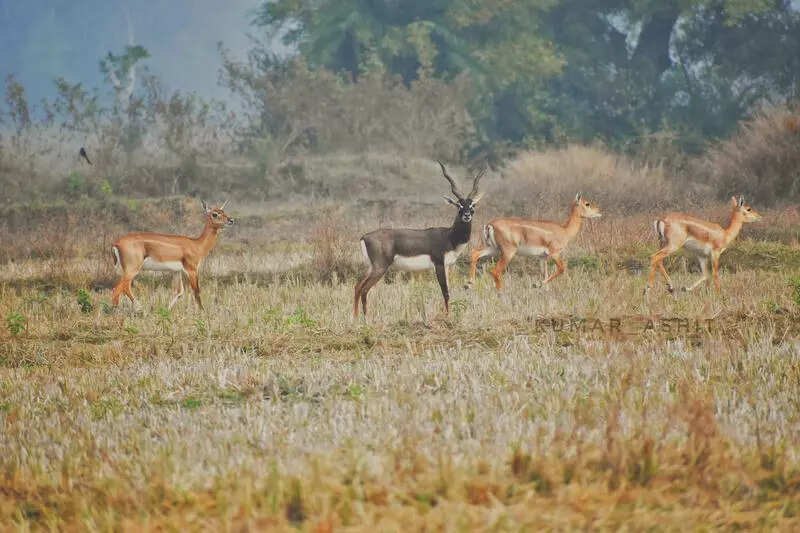Ganjam blackbuck numbers rise by 1,044 in 2 years: Data | Bhubaneswar News

Berhampur: Population of blackbucks in Ganjam district, the only habitat of the species in the state, has gone up by 1,044 in two years and doubled over seven years, according to census data.
In the latest biannual census conducted on Jan 29, 8,789 blackbucks were counted in the three forest divisions of Ganjam. The numbers have seen a significant rise from 4,082 in 2018 and 7,745 in 2023.
According to census data, the population includes 5,241 female, 1,765 male and 1,783 young blackbucks. The highest count was recorded in Ghumusar South division (5,627). It was followed by Berhampur (2,758) and Ghumusar North division (404).
“Improvement of habitat and protection given by the local people and forest staff are some of the reasons for the increase in the population of blackbucks in the district every year,” said B K Acharya, divisional forest officer (DFO), Ghumusar South.
Blackbucks, locally called ‘Krushnasar Murga’, is a Schedule-I animal under the Wildlife (Protection) Act, 1972 (amended in 1992) and is considered as ‘vulnerable’ in the IUCN Red Data book.
President of the Blackbuck Protection Committee (Ganjam), Amulya Upadhyaya, said villagers don’t harm blackbucks even when they graze on their croplands because they believe the animal is a harbinger.
However, the rising population has led to concerns of overcrowding in Ganjam. Blackbucks also inhabited the Balukhand-Konark wildlife sanctuary in Puri but vanished from the habitat around 2012-13. In an effort to restore their presence, the forest department has initiated a translocation programme.
Himansu Sekhar Mohanty, DFO of Ghumusar North, said they already shifted four blackbucks — three females and one male — from their area to Puri. “Another four animals would be translocated soon, as per the decision of the govt,” he added.
In the latest biannual census conducted on Jan 29, 8,789 blackbucks were counted in the three forest divisions of Ganjam. The numbers have seen a significant rise from 4,082 in 2018 and 7,745 in 2023.
According to census data, the population includes 5,241 female, 1,765 male and 1,783 young blackbucks. The highest count was recorded in Ghumusar South division (5,627). It was followed by Berhampur (2,758) and Ghumusar North division (404).
“Improvement of habitat and protection given by the local people and forest staff are some of the reasons for the increase in the population of blackbucks in the district every year,” said B K Acharya, divisional forest officer (DFO), Ghumusar South.
Blackbucks, locally called ‘Krushnasar Murga’, is a Schedule-I animal under the Wildlife (Protection) Act, 1972 (amended in 1992) and is considered as ‘vulnerable’ in the IUCN Red Data book.
President of the Blackbuck Protection Committee (Ganjam), Amulya Upadhyaya, said villagers don’t harm blackbucks even when they graze on their croplands because they believe the animal is a harbinger.
However, the rising population has led to concerns of overcrowding in Ganjam. Blackbucks also inhabited the Balukhand-Konark wildlife sanctuary in Puri but vanished from the habitat around 2012-13. In an effort to restore their presence, the forest department has initiated a translocation programme.
Himansu Sekhar Mohanty, DFO of Ghumusar North, said they already shifted four blackbucks — three females and one male — from their area to Puri. “Another four animals would be translocated soon, as per the decision of the govt,” he added.
















